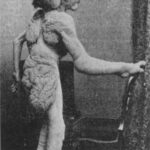Photography is capable of capturing the world as we see it. Unlike an artist, who captures the world as they see and interpret it, photography offers a view that everyone sees and understands. Unlike painting, however, photography is a relatively new invention. Although photography has come a long way in two hundred years, remnants of the old techniques remain. One example is the persistent use of sepia tones by many people today.
The French scientist Joseph Nicéphore Niépce, trying to find improvements for a new technique of printmaking called lithography, found that he could create engravings on glass and pewter plates using a chemical called bitumen. He then shared his findings with an artist by the name of Louis Jacques Mandé Daguerre. Daguerre, two years after the death of Niépce, would discover a new way to create images. This new process solved the problem of images darkening over time. This new process came to be called the daguerreotype.
Soon photography took the world by storm and now it’s common for every household to have some sort of camera. Now that we have color photography, there is still that interest to see ourselves in black and white or even in sepia tones. Black and white photos give pictures a romantic quality but sepia tones give a more softer appearance that anything in grayscale. Some viewers feel that sepia photographs feel more alive and at times elegant often provoking images of a bygone era that still captivates our imaginations, an era that was more simplistic and focused on finding the beauty in everything.
Sepia is really brown but can also be associated with yellow or red tinge. Over time as a photograph fades, the sepia color leaks fading the image. These fresh images would have appeared in shades of bold brown but over time, depending on what they have been exposed, would either “yellow out” or stronger red tones would develop. Originally, sepia ink extracted from cuttlefish was used to develop pictures. To create a sepia toned photograph physically, a photographer would develop the print as he normally would then bleach the paper, to remove the silver from it and then soak the print in a sepia bath.
With digital photography there are many image editing software that can create the sepia look you want by a click of a button. Comments of those who enjoy sepia toned photographs comment how the tone “captures the mood of the picture rather than highlighting a specific point” of an image. Today we are so used to seeing photography in color, that seeing it in these sepia tones is like a breath of fresh air. It’s a whole new experience for us living in the age of color photography which is why it continues to be used long after its utility (i.e. aiding in the development of film) has passed.





